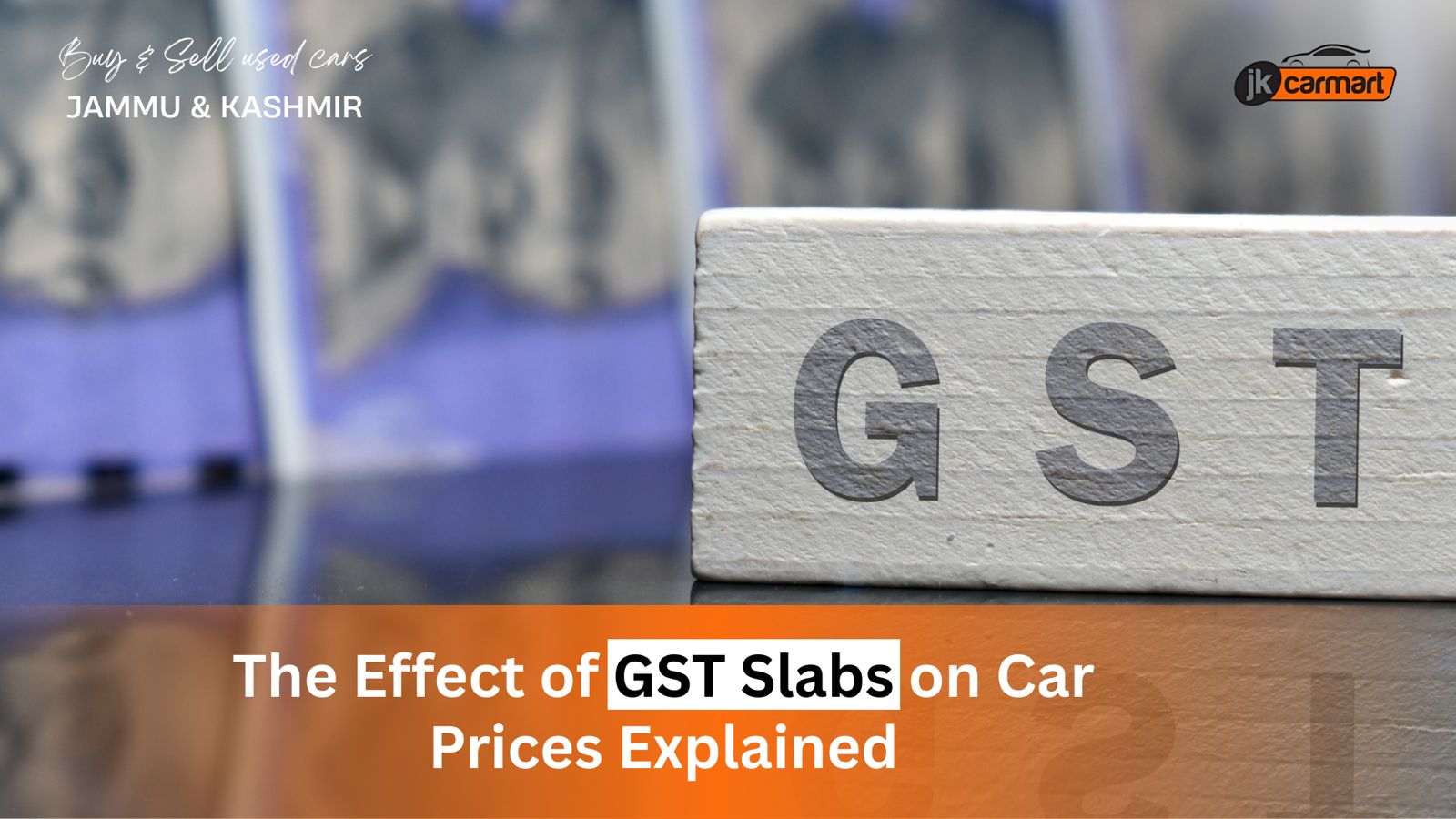Introduction
Buying a car is a big milestone for most Indian middle-class families. I’ve seen families save for years to buy a car because of the rising car prices.
But people often fail to realise that how much you end up paying often depends more on taxes on the car than on the actual car price. GST slabs directly contribute to a car’s final price.
Now, India is awaiting one of the largest shifts in its tax landscape in 2025 since the introduction of GST. The government has introduced GST 2.0 as a “Diwali gift” to consumers. This GST 2.0 has guaranteed easier structures and reduced tax rates.
But will it actually make cars more affordable? And if so, for whom? In this blog, let’s discuss what these changes actually mean and how they might design the future of car prices in India.
The Existing GST Slabs on Cars
Currently, the auto industry functions under a complex system. If you’ve ever wondered why a small car still feels heavily taxed, it’s because there’s not just GST (28%) but also something called a “compensation cess”.
This cost depends heavily on the type of car. In other words, the larger and more powerful your car is, the greater the tax charge.
This is how the current slabs look:
| Category | Current Tax Rate | Details |
| Small Petrol Cars | 29% | 28% GST + 1% cess |
| Small Diesel Cars | 31% | 28% GST + 3% cess |
| Mid-size Cars | 43% | 28% GST + 15% cess |
| Large Cars | 48% | 28% GST + 20% cess |
| SUVs | 50% | 28% GST + 22% cess |
| EVs | 5% | No cess; incentive for clean mobility |
No wonder India often gets called one of the world’s most heavily taxed car markets. A small hatchback like an Alto gets hit with close to 30% in taxes, while SUVs face a punishing 50%.
Also Read: Why Used Car Values Are Rising in 2025 – And What It Means For You
What GST 2.0 Actually Means for Cars
Under the current GST system, cars don’t just pay the flat 28% GST. There’s also a “compensation cess” on top, which changes depending on the car’s engine size, length, and type. That’s how we end up with tiny hatchbacks paying around 29%, while big SUVs get taxed close to 50%.
The government says the idea is to cut the clutter. Instead of four slabs (5%, 12%, 18%, 28%) plus all those cesses, GST 2.0 suggests moving to just three brackets:
- 5% – for essentials
- 18% – for most goods, including small and mid-size cars
- 40% – for luxury and “sin” goods like SUVs, high-end cars, alcohol, tobacco, etc.
This is the side-by-side comparison of current vs. proposed rates:
| Category | Current Rate | Proposed GST 2.0 Rate | Likely Impact |
| Small Cars | 29-31% | 18% | Big drop; cars ₹55,000–₹1.15 lakh cheaper |
| Mid-Size Cars | 43% | 18-40% (pending final decision) | Could see significant cuts if under 18% slab |
| Large Cars | 48% | 40% | Slight relief (down from 48%) |
| SUVs | 50% | 40% | Noticeable cut, but still heavily taxed |
| EVs | 5% | 18% | Likely price hike of ₹3–3.5 lakh |
| Luxury EVs | 5% | 40% | Huge jump; industry concern |
Proposed GST 2.0 Reforms
During his Independence Day 2025 speech, Prime Minister Narendra Modi outlined what might be the most sweeping tax change since GST was first launched: GST 2.0.
The plan is to scrap the confusing four-slab system (5%, 12%, 18%, 28% plus cesses) and replace it with a cleaner structure with just two core slabs (5% and 18%), along with a 40% “special rate” reserved for luxury and sin goods.
For the auto sector, the impact could be huge:
- Small cars are the biggest winners, likely falling into the 18% slab. That’s a steep drop from today’s 29–31% effective rate.
- Large cars and SUVs will be slotted into the 40% slab. It’s still high, but compared to the current 43–50% rates, buyers could see some relief.
- Electric vehicles (EVs) face a potential setback. Their current 5% concessional rate may disappear, with mainstream EVs moving up to 18% and premium EVs (above ₹40 lakh) possibly jumping all the way to 40%.
What It Means for Car Prices
- Small Cars – Clear winners: This is where the biggest relief comes. Taxes may drop by 10–13 percentage points. For a family eyeing a Maruti Alto, that could mean savings of around ₹50,000–70,000. A Hyundai Grand i10 might become ₹60,000–80,000 lighter on the pocket.
- Mid-size SUVs – Noticeable savings: Popular models like the Mahindra XUV700 could get ₹1–1.5 lakh cheaper. For buyers already stretching their budget into SUV territory, that’s a good thing.
- Large Cars & SUVs – Less painful, but still pricey: Even with the 40% slab, this is lower than today’s punishing 48–50% rates. This means that A Toyota Fortuner won’t suddenly become affordable, but you can’t deny that it’s still some relief.
- EVs – The plot twist: Today, EVs pay just 5% GST. If that goes to 18%, a ₹25 lakh electric SUV could cost an extra ₹3–3.5 lakh. And premium EVs like Audi e-tron or Mercedes EQC might jump straight into the 40% bracket.
Not surprisingly, many buyers have hit the pause button. Showrooms have gone quieter. Maruti Suzuki’s August 2025 sales fell 8%, and the mini segment alone plunged 36%. People are clearly waiting to see how this plays out.
Sectoral Winners and Losers
The reforms won’t affect everyone equally. This is what the early picture looks like:
- Small Cars: This segment could finally make a comeback. Over the last few years, rising prices had quietly pushed many first-time buyers out of the market. If GST drops to 18%, companies like Maruti Suzuki and Tata Motors may see a fresh wave of budget-conscious buyers.
- SUVs & Luxury Cars: Still taxed heavily, but a simplified 40% slab is easier to work with than today’s messy 48–50% range. Luxury carmakers like BMW, Mercedes, and Audi are already eyeing festive season campaigns, hoping to convert this into a marketing win.
- EVs: The ones most at risk. Tata, BYD, and MG have been lobbying hard to keep the current 5% GST rate. Their argument is that raising taxes now could derail India’s EV adoption goals just when the EV market has started to gain traction.
Also Read: Second-Hand Cars: Save Money Without Compromising on Quality
Conclusion
GST 2.0 might turn out to be the biggest change in car taxation since GST first came in 2017.
Small car buyers stand to gain the most. SUVs and luxury car buyers might get some relief, though not much. EV makers, on the other hand, may feel like they’ve been left out of the party because of the heavy taxes that could be imposed on EVs.
If GST 2.0 lands by October 2025, the festive season could explode into one of the strongest buying sprees in years. If not, the auto market risks staying stuck in uncertainty.





